
The embiotocid surfperches were my gateway to the intertidal; thus, they have a special place in my heart. The Embiotocidae is an eastern Pacific radiation of around 20 species. This page shows the common northern Oregon surf-dwellers, redtails Amphistichus rhodoterus, silvers Hyperprosopon ellipticum, and walleyes Hyperprosopon argenteum. I can’t resist, however, showing off a few other common examples, like shiners Cymatogaster aggregata and striped Embiotoca lateralis from along the jetties and in the bays and estuaries. Finally, I take the liberty of sneaking in a few other favorites, like calicos Amphistichus koelzi, pinks Zalembius rosaceus, and spotfins Hyperprosopon anale. Experts in the references listed at the bottom of this page cover these embiotocids and more.
Let the surfperches be upon you!
Calico surfperch Amphistichus koelzi
I’ve never had the pleasure of connecting with a calico on my terms, but I was hanging around, ready to snap a photo, when Mike Westphal caught this one on a central California pier. Calicos are few and far between in northern Oregon.

Redtail surfperch Amphistichus rhodoterus
King of the Surf in northern Oregon.



Barred surfperch Amphistichus argenteus
Barreds patrol central and southern California beaches and range south to northern Baja California, Mexico.
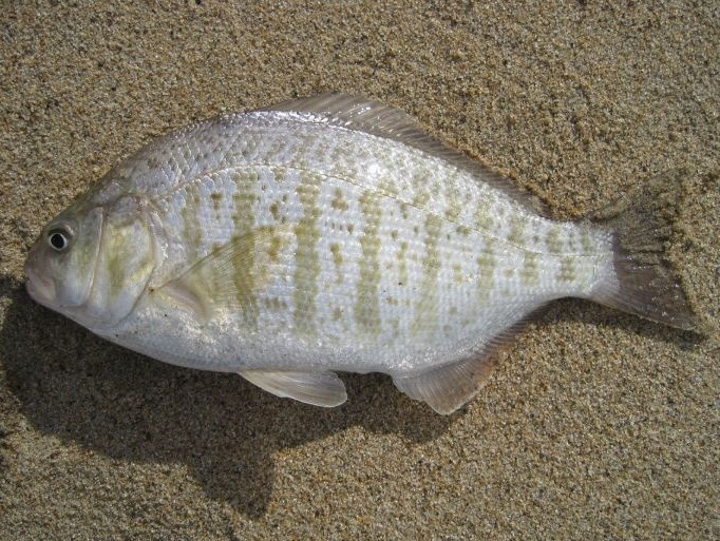
Shiner surfperch Cymatogaster aggregata
Shiners live in many habitats, but you’ll rarely find them in the surf zone.



Pile surfperch Damalichthys vacca
You won’t find “piling perch” in the surf, but every spring, they cause a stir among pier the fishermen when they move into the bays.
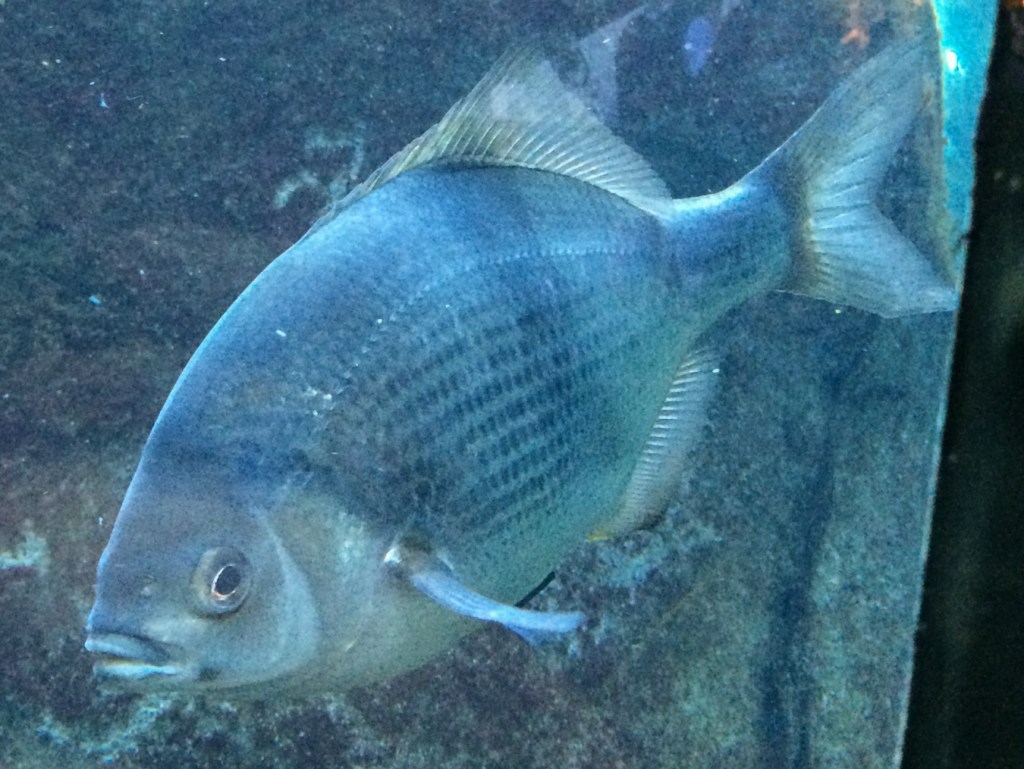
Striped seaperch Embiotoca lateralis
Off the Oregon jetties, striped seaperch are the most consistently caught embiotocid.

Spotfin surfperch Hyperprosopon anale
Oregon anglers rarely connect with spotfins, and even more rarely in the surf zone.
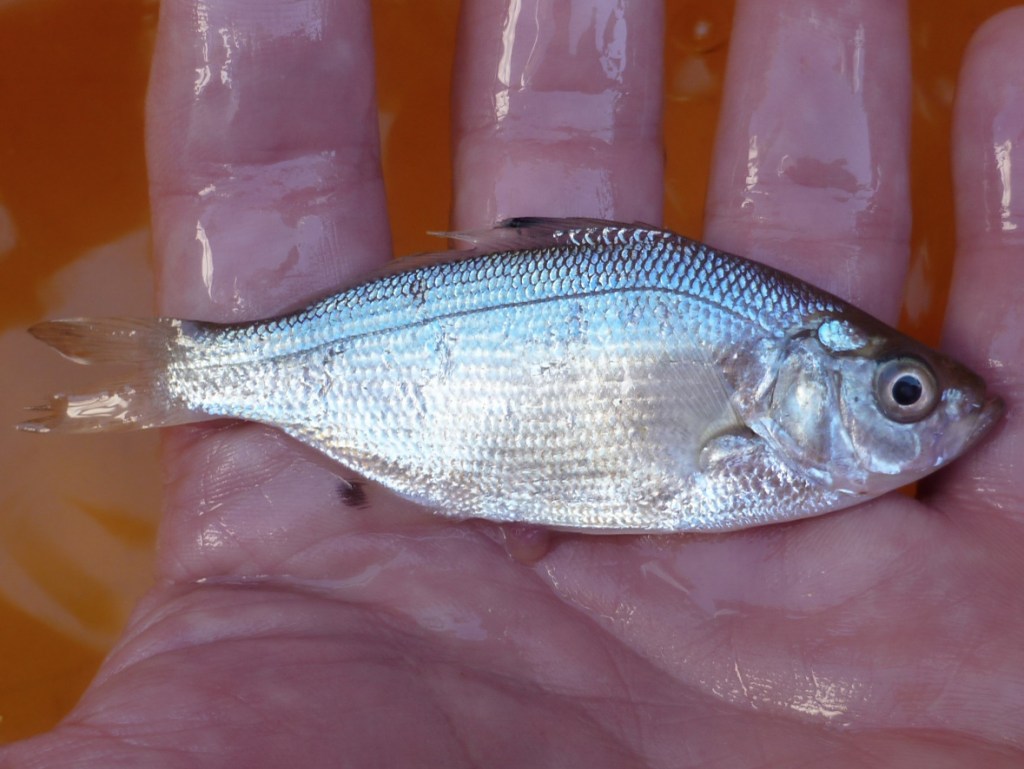
A provocative find from late September 2022 was the spotfin shown below, which washed ashore about a hundred miles north of its known range as I understand it. You’ll notice by their handiwork that beach hoppers found it before I did.

Walleye surfperch Hyperprosopon argenteum
The big three on northern Oregon’s surf-swept beaches are walleyes, redtails, and silvers. There, when it comes to abundance, no other embioticid comes close.

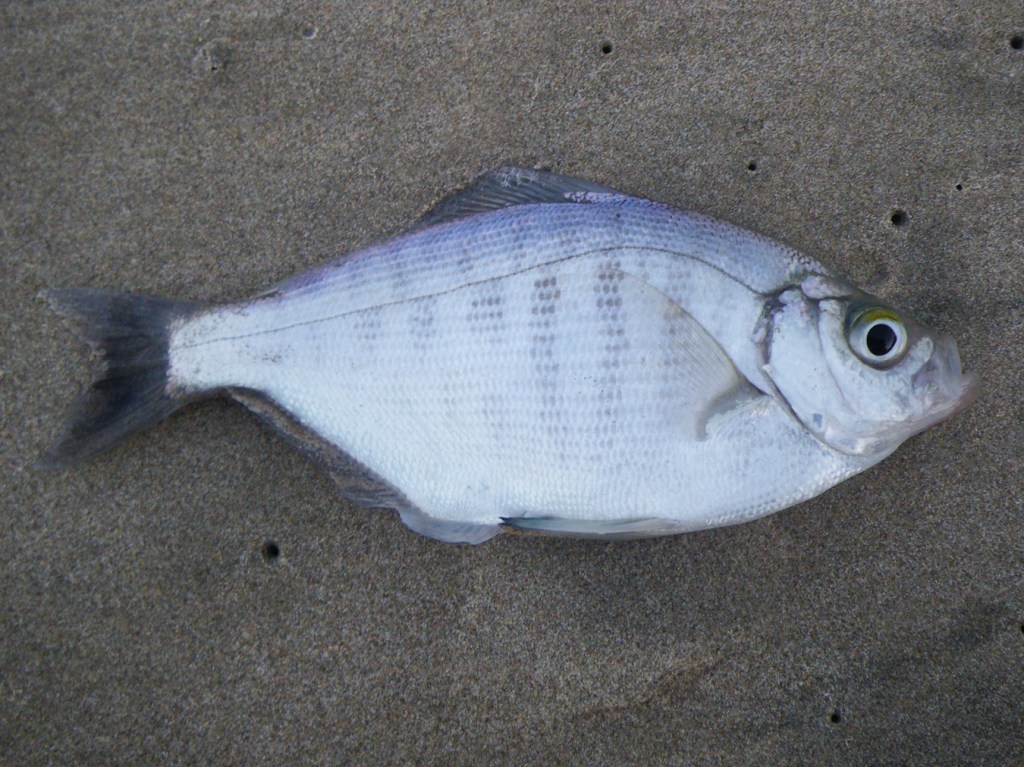
Silver surfperch Hyperprosopon ellipticum
An abundant surf-dweller. One of the more exciting things about silvers is a decent percentage of both sexes have orange or black (or both!) pigmentation on the anal fin. Males develop seasonal anal fin swelling.



White seaperch Phanerodon furcatus
In Oregon, shore anglers wait for spring when they can catch great numbers of whites in the estuaries.

Pink seaperch Zalembius rosaceus
Pinks don’t inhabit the surf; they live deeper than most other Embiotocids, mainly in California and Baja California, Mexico. The fish shown here is the first pink I ever laid eyes on. It was part of a trawl catch aboard the R/V Point Sur.

More photos of these and other embiotocids can be found at Enjoying Embiotocids at the Monterey Bay Aquarium.
References
Love, M. 1996. Probably more than you want to know about the fishes of the Pacific coast. Really Big Press, Santa Barbara, California.
Miller, D. J. and R. N. Lea. 1972. Guide to the Coastal Marine Fishes of California. California Fish Bulletin Number 157. California Department of Fish and Game, Sacramento.
I updated this page on September 13, 2023.
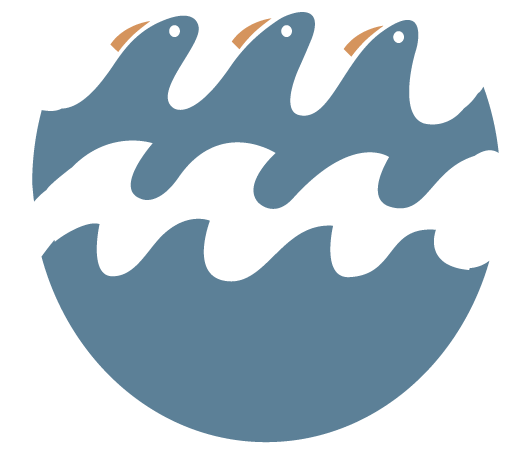
1 Comment